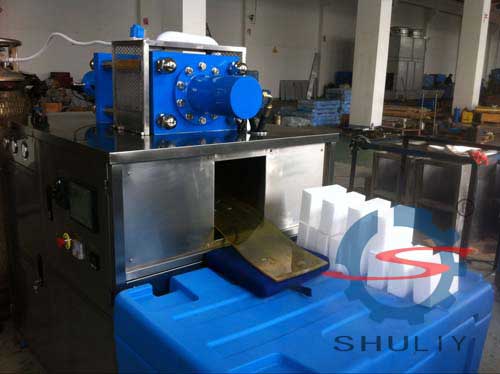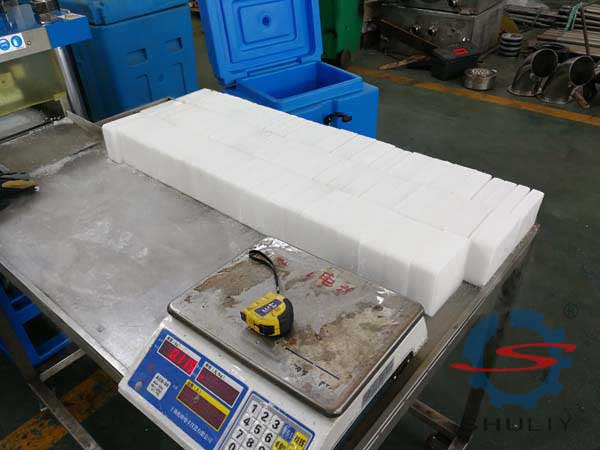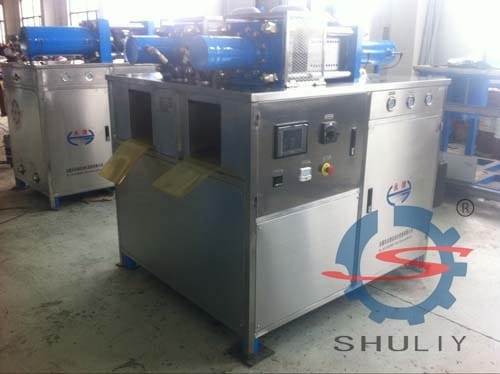Siku hizi, Sote tunajua njia mpya ya kusafisha tasnia ya ulipuaji wa barafu kavu ni maarufu sana. Hata hivyo, bado kuna watu wengi ambao hawajui kuhusu barafu kavu, hasa kwa watu wanaoishi katika baadhi ya nchi zinazoendelea.

Kwa kweli, barafu kavu ni dioksidi kaboni ambayo inaweza kutengenezwa na mashine ya barafu kavu, na inaweza kuwa vipimo vingi, kama poda kavu ya barafu, vidonge vya barafu kavu na vipenyo tofauti na vitalu vya barafu kavu na unene tofauti.
Jinsi ya kutengeneza vitalu vya barafu kavu kwa utunzaji wa chakula?
Mashine ya kuzuia barafu ya Shuliy ina mifano 8 ambayo ni tofauti katika uwezo wa kufanya kazi na saizi kavu ya barafu. Pato la mashine ya kuzuia barafu kavu ni kati ya 120kg/h hadi 1000kg/h, na ukubwa na umbo la vitalu vya barafu kavu vinaweza kubadilishwa kulingana na mfano wa mashine ya barafu kavu, na kadiri pato la mashine kavu ya kuzuia barafu, ukubwa wake utakuwa mkubwa.

Hasa, unene wa vitalu vya barafu kavu vinaweza kubadilishwa kulingana na mahitaji tofauti. Kawaida, vitalu vya barafu kavu hutumiwa kwa kuweka chakula kwenye jokofu na uhifadhi na usafirishaji kwa dagaa, ili saizi yake iwe rahisi kurekebishwa ili kuendana na nafasi tofauti zenye.
kuu sifa ya mashine kavu ya kuzuia barafu
Umbo: Umbo ni kama tofali.
Rangi: theluji nyeupe imara
Msongamano: msongamano juu ya 1.6
Joto: minus 78.5 digrii Selsiasi
Specifications: inaweza kuwa umeboreshwa

Vipande vya barafu vikavu sio rahisi kusalimika na vinaweza kutumika sana katika usafirishaji ili kudumisha hali ya kuganda au ya chini ya joto ya vitu au chakula. Ufanisi wa uzalishaji wa kuzuia barafu kavu iko juu na pato kubwa kwa saa.
Kando na hayo, ubora wa barafu kavu ni wa juu, na manufaa yake ya kiuchumi ni mazuri sana. Karibu tukuulize kwa maelezo zaidi kuhusu mashine ya barafu kavu na uzalishaji wa barafu kavu.